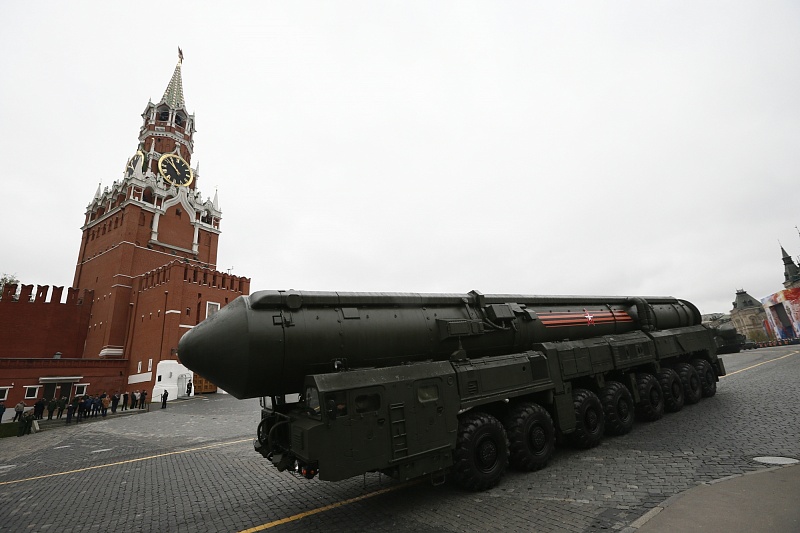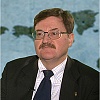The U.S.-Russia Arms Control Talks at the Highest Political Level Are Needed – At Least to Hammer Out Some Initial Arrangements
In
Log in if you are already registered
The USA and Russia are facing the most dangerous security crisis in recent years for their nations and the world at large. The global implications of such crisis are also alarming. While the last century was labelled as the nuclear age, the current one has been characterized as ballistic missile defense age and as a potential space-based arms age.
Its evident implications have produced very strong negative impact, especially upon the arms control process.In has nearly stalled. There no any new talks in this domain. Such new talks are somewhere over the skyline.
There are 15 unresolved issues between the two nations in this area though during the first stage of the Cold War Washington and Moscow have managed to reach accords on strategic nuclear arms limitations and subsequently in their substantial reductions, on the ballistic missiles’ defense limitations, two classes of nuclear-tipped medium-range and shorter-range land-based ballistic and cruise missiles have been scrapped, several confidence-building measures in the military domain have been elaborated.Currently there are 12 arms control arrangements that are either denounced unilaterally (ABM Treaty, Iran nuclear deal), or non-ratified (CTBT, adapted CFE) or partially violated New START, INF Treaty, Open Skies Treaty, CWC, BWC) or completely disregarded by the USA (European Security Treaty, Treaty preventing arms race in outer space). The INF Treaty that has been widely welcomed all over the world has been violated by the Pentagon 93 times while testing the effectiveness of the U.S.BMDS with the use of medium-range and shorter-range missiles as mock missiles prohibited by the INF Treaty.
The Security Summit between Presidents Trump and Putin exclusively devoted to arms control is needed.The proposed Summit has to be prepared with the utmost accuracy and dedication displayed by the two sides. It should be oriented to practical, mutually acceptable solutions to be clearly understood and shared by the American and Russian citizens, and by the entire world community.
Certainly, it is difficult to imagine that the leaders of two superpowers could reach a comprehensive accord on all 15 unresolved issues in the arms control area during their first Summit. But, in order to make a considerable step forward to greater bilateral and global security they have to make at least a number of initial steps, for example:
They require concrete solutions to be made at the level of the Presidents of the USA and the Russian Federation. Only they can, if they wish, to restore the profitable arms control process that has been implemented in the past. That is why the appeal should be addressed to them, to their wisdom and to their dedication to make our world safer, more stable and more predictable.
A.: The idea is fine, but it is unattainable, because of lack of mutual trust between Washington and Moscow and striking disparity between preconditions for using nuclear weapons – while the current U.S.NPR has 14 grounds to use them, the Russian nuclear doctrine incorporated only two. The other stumbling block is a negative response of the USA towards 12 arms control arrangements with Russia.
A.: There is only one possible solution: to restore mutual trust, respect and confidence in practical manner – to sign a NFU accord having unlimited duration between the USA and Russia. The USA has to pull back all its tactical nuclear weapons from 5 NATO-member states to the CONUS, and stop air patrolling near Russia involving heavy strategic bombers and ‘dual-capable aircraft’ in the Baltic Sea area. As the ex-Defense Secretary William Perry has put it in his “My Journey at the Nuclear Brink” (2015) “… to make real progress in reducing nuclear dangers, the United States must lead” (P. 195). It is not serendipity that he used the phrase the USA “must lead”.
A.: For nuclear domain the answer is given in items 1 and 3; for conventional weapons’ area the answer is given in item 5; for outer space the answer is given in item 4, and for BMDS the answer is given in item 2.
A.: It is expedient for North and South Koreas to sign a NFU accord and the same treaty between the USA and North Korea; the USA has to offer to North Korea real security guarantees with a commitment not to attack it, not to change the regime, not to arrange a large-scale military drills near its shores, especially involving nuclear SOA.

Photo: AP
Ph.D., Leading Expert, Military-Political Studies Center, Moscow State Institute of International Relations (MGIMO)
Blog: Vladimir Kozin's Blog
Rating: 0




